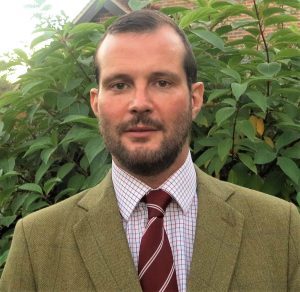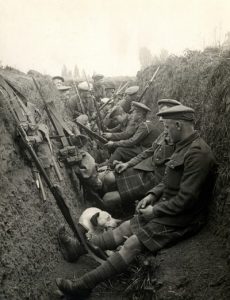
Napoleon is often touted as having said, ‘history is a set of lies agreed upon’. In many ways, history says more about the time this agreement is reached rather than the events themselves. We have to be careful and mindful in understanding why people had “agreed upon these lies” and why this has now changed.
Our values are not those that were upheld hundreds of years of even decades ago. We have to be careful that we do not judge past times ex post facto, but that we try to understand what made people “tick” in times gone by. Only this will help to explain and expose the “lies”. Everything else is merely an expression of the arrogance of the present. This applies to history in general and thus also to military history. History is full of conflicting stories, and it would be too easy to search for evidence that merely supports a pre-established view. Doing this is not history. It is similar to a detective who dismisses vital evidence, because it does not support his inclination of who committed the crime. And yet, in the military we need history to provide answers. The military profession is, in many ways, unique. One of the features is that soldiers often train and prepare for events that never occur. And the situations that soldiers do prepare for are often very different from what faces them on the field of battle, because every war, every battle and every engagement is different. This also means that first-hand experience of conflict can be of limited value -and sometimes even harmful- when engaging in the “next war”. The wealth of military history is often the only framework that enables us to engage intellectually with war and to prepare for the next conflict. Military History is therefore not a “nice to have”, but an integral part of military training and education. And yet, military history is a mine-field. The plethora of examples that history provides means that you can find arguments for and against any particular view and lesson learnt. This makes applied military history confusing, and, if studied incorrectly, dangerous.
Width Depth and Context

The solution to this conundrum was framed beautifully by the late Professor Sir Michael Howard in his lecture (then turned into an article) on “The Use and Abuse of Military History”, which remains one of the core texts for anybody who is interested in military history and the use of history in present times.[1] Military history can offer useful insights if it is studied in width, depth, and context, as Sir Michael explained. By width he meant that we need to analyse history over long periods of time. Using a magnifying glass in order to analyse a tactical event to its nth degree might be interesting, but it does not provide deep analysis and is of no help for the Army of today. By depth Sir Michael meant that no stone should be left unturned when carrying out research. Official documents, personal papers, interviews, etc are all valid sources for the historian. They might complement or contradict each other. If the latter is the case, it is the task of the historian to find out why this occurred. Once again, the historian works in a way similar to a police-officer or lawyer. The final aspect mentioned by Sir Howard is context. In essence, this means that we need to understand the bigger picture, in particular the societies that armies and soldiers stem from. War does not happen in a vacuum and soldiers are not military robots. Achieving width, depth and context is difficult, but necessary if the full picture is to be gained.
Studying military history within the parameters set out by Michael Howard provides sound analysis. The problem is that this takes time and this poses a particular problem for military history that is supposed to support military thinking. Two worlds clash here: The need for the gown to carry out deep analysis, and the requirement of the green for quick decisions and actions. Writing a long analysis of a subject and then being asked what the half-page summary is, is, from the historian’s point of view, depressing, but it is the character of Army business. But, likewise, the Army needs to understand that valid (deep) analysis cannot be produced to the usual headquarters time-lines. Otherwise, the Army will end up with a “Wikipediasation of history”.
Squaring the circle
How do you square this circle? This can only be achieved by a combination of the two approaches. This makes special demands on the historian and it demands an understanding from the green side. It means that the historian needs to be able to conduct long-term and in-depth historical analysis. “Ad fontes”, back to the sources, was the battle-cry of the historians in the 19th century and it has remained thus ever since. Quick searches on the internet are not historical research. However, it also means that the historian working in a military environment has to be able to provide accurate information quickly and reliably if and when needed. This means that the historian has to be flexible. How can you ensure that you have the information available when it is needed? There are several ways to achieve this. The first one is to react to direct requests from the Army. From the beginning, it needs to be clear what is expected: deep, long-term analysis or some quick advice? One has to be honest and make clear that quick advice will always remain shallow. The historian should also analyse the current situation and develop a “feeling” for what the Army will -or should- be interested in in the future. He or she needs to anticipate the “unknown unkowns”, so that an answer can be provided quickly when needed in the future. Naturally, such stabs in the dark will not always hit the mark, but, very often, the stab will be close enough so that it can be used as the foundation for other rapid and directed research. This approach is, for the “normal” historian, unusual. The required qualities and abilities for this do not come straight out of the historian’s tool-box.

A historian working for the Army therefore needs to be able to look back in history, but also understand the current military, social and political contexts and anticipate the future. The question whether military historians should have military experience is one that is as old as the subject itself, and in history we find successful historians in both camps. My personal assessment is that military experience sure does help, as long as this does not restrict one’s thinking. It helps to understand the thought-processes of the military. It helps to develop an understanding of the pressures that military decision makers can face. Every historian who has ever worked in a military HQ will read military sources with a different eye. This is important, because the task is to be a critical friend, offering advice and pointing out mistakes and wrong developments. The task is not to tell the Army what it wants to hear. Intellectual development, and thus the conceptual component of fighting power, thrives on debate and exchanges of views. If the analysis is muzzled through chains of command, military, political or societal restrictions and intellectual flavours of the month the advice offered will be useless at best and more probably it will be harmful.
CHACR’s role
CHACR has continuously worked in this realm and it has shown that the two, seemingly fundamentally different, approaches can be combined. Over the last four years we have carried out “deep” academic studies on the First World War, reconstitution of armed forces, what “winning a war” actually means, and the legacies of the Second World War. All of these projects have (or will) produce academic books and have been fed directly into the Army through internal reports, briefings and lectures. The historical analysis section of CHACR organised three conferences based on the academic studies. We also carried out research on the impact of the Spanish Flu and what we, in 2020, can learn from this pandemic. Some of these projects were directed by the Army while others were the product of horizon-scanning. And yet, the historical analysis section of CHACR was also able to fulfil the Army’s needs of quick delivery by organising study days, giving lectures and seminars, writing commentaries, recording video lectures, preparing short briefing notes, and contributing to the quick-moving world of developing strategy. This could only be achieved because of the aforementioned “stabs in the dark” and horizon-scanning, and because CHACR can rely on an extensive academic network, both institutionally and individually, through its academics.
Battlefield studies
Battlefield studies are another valuable tool to make use of history. The same caveats apply as to the wider analysis of history, and it is the role of the historian to provide the three levels of analysis identified by Sir Michael Howard, so that the “right” and meaningful questions can be asked. CHACR has supported numerous battlefield studies, including the senior staff ride to Berlin in 2018, the Operation Reflect studies of the First World War in 2016 and 2018, a trip to Spain to study the Spanish Civil War in 2019, an urban warfare staff ride to Budapest in 2019, and a staff ride to India in 2019. In addition to these, CHACR has offered conceptual support in preparation for numerous other battlefield studies.
Summary
With its activities, CHACR has supported the conceptual component of fighting power. This is a challenge, because results can be less tangible than in other areas. It is an even greater challenge in the current climate in which money is tight and outputs have to be measured for their effectiveness. It is easy to count how many tanks an army has, but it is less easy to decide -a priori- how “good” the conceptual component is. Often, this only becomes obvious in retrospect. The German invasion of France in 1940 is a good example. In a nutshell, the Germans were superior in the conceptual realm, which meant that they could defeat the numerically stronger allies in a six-week campaign. This does not mean, however, that the Allies did not have a conceptual component of fighting power or that they disregarded it. They got it wrong, because they asked the wrong questions and channelled their analysis of history. The First World War had been a victory, so why rock the boat, ask inconvenient questions and change a winning principle. The Germans, as the vanquished of that war, analysed their shortcomings and were forced to ask these questions, which set them on the path to military victory in 1940. A comparison of the analytical lessons-learnt processes after the First World War in the German Army on the one hand and the British and French Armies on the other should be required knowledge for everybody who engages in questions relating to the conceptual component of fighting power in the Army today. This is a good lesson about the use of history: We simply do not know what even the near future has got in stock for us. So, preparing for a certain scenario and scanning military history in order to provide insights for this specific scenario is, in essence, setting the Army, the state, and the nation up for defeat. The aim of history, and this includes military history, is not to make men clever for the next time, simply because we do not know what this next time will look like; it is to make them wise forever, as Jacob Burckhardt said and as Sir Michael Howard repeated in his lecture.
[1] http://the-military-instructor.24301.n8.nabble.com/file/n168/Howard_Use_and_Abuse_of_Military_History_Howard.pdf, accessed 13/07/2020.







